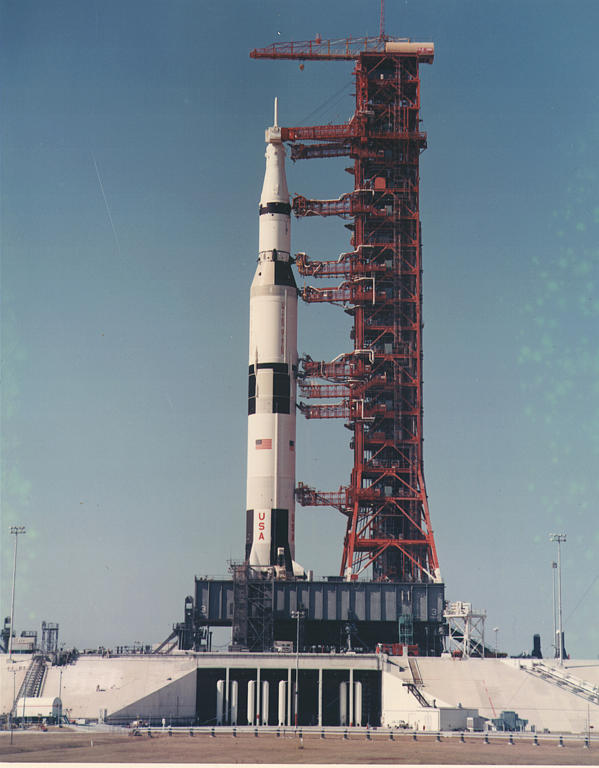A few days ago I drove past the ‘umbilical’ tower for NASA’s new (but now postponed) Ares rocket programme.

Although smaller it is reminiscent of the far taller structures of project Apollo.

Both Ares and Saturn were ‘mated’ to their respective towers inside the vast Vehicle Assembly Building (VAB) and then rolled out on a ‘crawler’ to launch pad 39 A or B at the stately rate of 1 mph. The towers for the soon to be terminated Shuttle programme, on the other hand, were permanent fixtures at each of the two pads with a Shuttle, standing alone on its launch platform, brought ever so carefully the 3 1/2 miles to its designated pad.

Why did NASA revert to bringing Ares vehicle and tower out to the pad for each launch before returning the vacated tower to the VAB? Rust.
The Kennedy Space Centre is situated on the Florida coast and is therefore permanently doused in salty, moist air. The Shuttle launching structures required near constant attention to deal with the corrosion problem. Rusting is an electro-chemical process so, by definition, generates electricity – the first wet cell batteries exploited the principle.

And this signals another headache NASA had to deal with when the mighty VAB itself was being constructed. The building is enormous, comprising almost 100,000 tonnes of steel work, and still one of the largest by volume in the world (it had to be to be able to enclose the 363’ tall Saturn V rocket).

But its steel pile foundations have to reach down some 50 feet to solid bedrock… through a salty solution – perfect conditions for electro-chemistry to do its rusty worst! NASA realised that if they did not protect the steel piles they would not only have corroded the steel beams and piles but also, in effect, turned the whole VAB into ‘the world’s largest wet cell battery’.